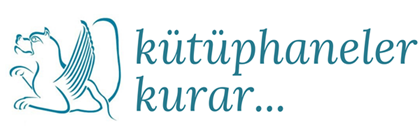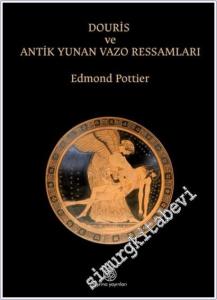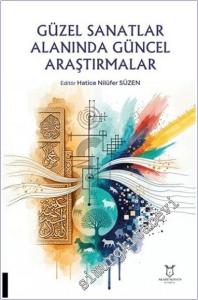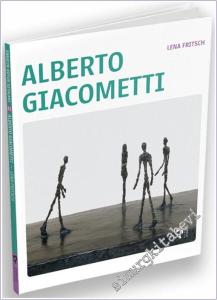1199149467
535629
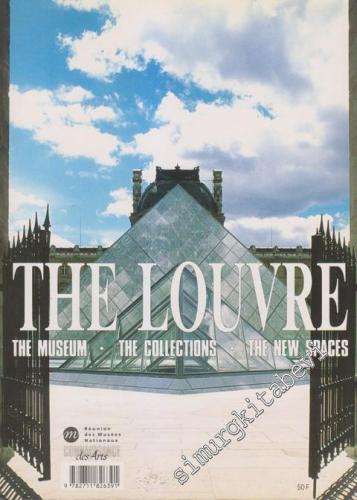
https://www.simurgkitabevi.com/the-louvre-the-museum-the-collections-the-new-spaces
The Louvre: The Museum, The Collections, The New Spaces - #smrgSAHAF
0.00
The Louvre's bicentennial marks an important moment in the history of museums. The creation of the first French museum set out the principle of free access to the royal collections, which, saved from dispersion by the Revolution, thus became part of the national patrimony: on 18 November 1793, the gallery of the "Central Museum of the Arts" was definitively opened to the public. This is a symbolic date for the creation of the modern state and for the conception of its patrimonial role and pedagogical mission that remains our own. This conception continues to justify the activity of the ministry that I now direct, which is, in Andre Malraux's words, "to make the outstanding works of humanity accessible to the greatest number of people." What then is more natural for the Louvre's bicentennial than to offer the museum the possibility of expanding into the Richelieu wing, which, with the departure of the Ministry of Finance, now permits the Louvre palace to be entirely devoted to museum activities ? The museum that will be presented to the public has thus been profoundly trans-formed and renovated. But the operation is hardly completed. It will continue between 1994 and 1997. In the palace itself, the Cour Carree and the Denon and Fiore wings will be entrusted to young architects for remodeling and new presen-tations. Throughout the museum, technical and security facilities will be revamped. The renovation of the Union of Decorative Arts will also-begin this year. The res-toration of the facades will continue along the Carrousel gardens, on the Seine side, and in the Lefuel and Visconti courtyards. But the Grand Louvre, to remain close to its history, must also involve itself with the Louvre and Tuileries Domain. I have insisted that the projects under study for the Tuileries and the Carrousel should be reviewed by the Higher Commission for Historical Monuments and the Sites Commission, as required by law. The obser-vations that these two bodies have now made will be taken into consideration by the Public Authority for the Grand Louvre, which is responsible for the projects. The restoration of the statuary, which is in poor condition, but also the replanting of the trees to guarantee the survival of the "Great Green Cover,"will be carried out with all necessary requirements and precautions. Likewise, the quality of the architecture for the garden concessions will be carefully examined. This vast project has become meaningful through the exceptionally fine intervention of I. M. Pei, who has managed at one and the same time to respect the palace that is charged with seven centuries of French history and to introduce the modernity that is necessary to curators and public alike. I should therefore like to pay homage to him, for both the simplicity and the grandeur of his work. For the past ten years, the programs carried out by the Public Authority for the Grand Louvre have focused on a domain of more than forty hectares extending from the Church of Saint-Germain l'Auxerrois to the Place de la Concorde. With the project that the city of Paris has entrusted to I. M. Pei for making the Place du Palais-Royal into a pedestrian mall, along with that for the reconstruction of the Solferino passageway, the public intervention is expanding and the Louvre palace opening even more onto its urban surroundings. This ensemble, located between the Palais Royal and the banks of the Seine and connecting the Louvre Museum with those of Orsay, the Mint, the Legion of Honor, and the Orangerie, the Beaux-Arts Academy, and the Jeu de Paume Gallery, offers a concentration of history and culture without equal in the world. Jacques Toubon Minister of Culture and of the Francophone Community
The Louvre's bicentennial marks an important moment in the history of museums. The creation of the first French museum set out the principle of free access to the royal collections, which, saved from dispersion by the Revolution, thus became part of the national patrimony: on 18 November 1793, the gallery of the "Central Museum of the Arts" was definitively opened to the public. This is a symbolic date for the creation of the modern state and for the conception of its patrimonial role and pedagogical mission that remains our own. This conception continues to justify the activity of the ministry that I now direct, which is, in Andre Malraux's words, "to make the outstanding works of humanity accessible to the greatest number of people." What then is more natural for the Louvre's bicentennial than to offer the museum the possibility of expanding into the Richelieu wing, which, with the departure of the Ministry of Finance, now permits the Louvre palace to be entirely devoted to museum activities ? The museum that will be presented to the public has thus been profoundly trans-formed and renovated. But the operation is hardly completed. It will continue between 1994 and 1997. In the palace itself, the Cour Carree and the Denon and Fiore wings will be entrusted to young architects for remodeling and new presen-tations. Throughout the museum, technical and security facilities will be revamped. The renovation of the Union of Decorative Arts will also-begin this year. The res-toration of the facades will continue along the Carrousel gardens, on the Seine side, and in the Lefuel and Visconti courtyards. But the Grand Louvre, to remain close to its history, must also involve itself with the Louvre and Tuileries Domain. I have insisted that the projects under study for the Tuileries and the Carrousel should be reviewed by the Higher Commission for Historical Monuments and the Sites Commission, as required by law. The obser-vations that these two bodies have now made will be taken into consideration by the Public Authority for the Grand Louvre, which is responsible for the projects. The restoration of the statuary, which is in poor condition, but also the replanting of the trees to guarantee the survival of the "Great Green Cover,"will be carried out with all necessary requirements and precautions. Likewise, the quality of the architecture for the garden concessions will be carefully examined. This vast project has become meaningful through the exceptionally fine intervention of I. M. Pei, who has managed at one and the same time to respect the palace that is charged with seven centuries of French history and to introduce the modernity that is necessary to curators and public alike. I should therefore like to pay homage to him, for both the simplicity and the grandeur of his work. For the past ten years, the programs carried out by the Public Authority for the Grand Louvre have focused on a domain of more than forty hectares extending from the Church of Saint-Germain l'Auxerrois to the Place de la Concorde. With the project that the city of Paris has entrusted to I. M. Pei for making the Place du Palais-Royal into a pedestrian mall, along with that for the reconstruction of the Solferino passageway, the public intervention is expanding and the Louvre palace opening even more onto its urban surroundings. This ensemble, located between the Palais Royal and the banks of the Seine and connecting the Louvre Museum with those of Orsay, the Mint, the Legion of Honor, and the Orangerie, the Beaux-Arts Academy, and the Jeu de Paume Gallery, offers a concentration of history and culture without equal in the world. Jacques Toubon Minister of Culture and of the Francophone Community
Yorum yaz
Bu kitabı henüz kimse eleştirmemiş.
